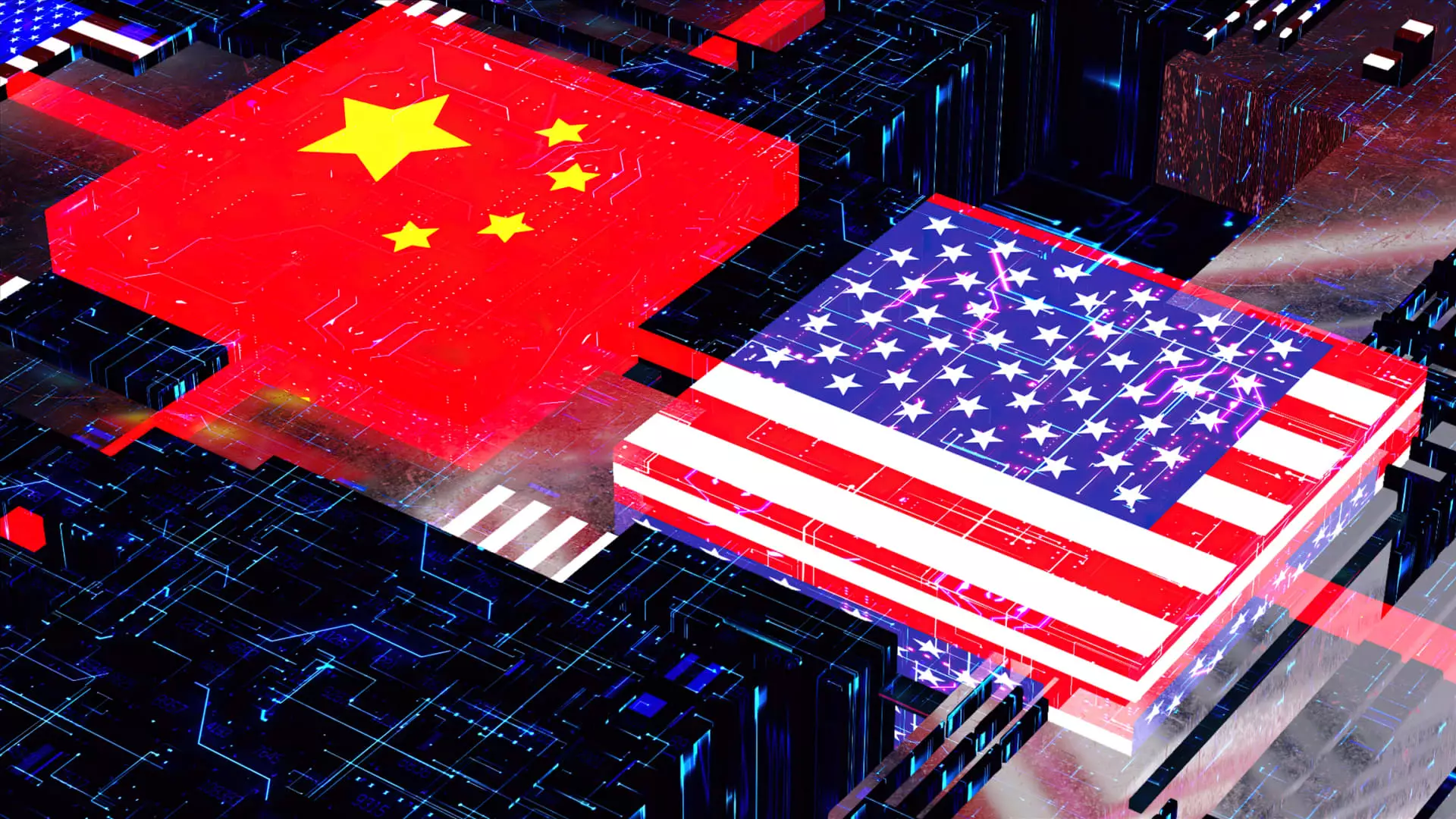The semiconductor industry, a cornerstone of our digital economy, finds itself in a precarious state. As companies grapple with the ramifications of shifting U.S. tariff policies and stringent export restrictions on China, uncertainty looms large. Significant events such as the implementation of reciprocal tariffs by the Trump administration have altered the landscape, creating doubt around the future demand for critical chip products. While certain exemptions have allowed items like smartphones and chips to escape immediate duties, the broader implications of these policies remain unstable. The question playing on everyone’s mind is: how will U.S.-China relations shape the technology landscape moving forward?
Already, we are witnessing the fallout from these policies. Industry giants like AMD and Marvell have had to revise their projections. For instance, AMD anticipates a staggering $1.5 billion in losses attributable to curtailed AI chip exports to China. Such figures bring to light the severe impact these geopolitical decisions have on financial outcomes. Moreover, Super Micro and Marvell’s recent decisions to withdraw guidance highlight the pervasive uncertainty felt throughout the sector. In times like these, clarity is a luxury even the most seasoned executives cannot afford.
The Vanishing Market for AI Investments
As major tech players like Microsoft and Amazon pledge enormous investments in data centers, many might reasonably assume that demand for AI products is on the rise. However, the reality is grim. The VanEck Semiconductor ETF, an index tracking chip stocks, is down nearly 12% this year. Disappointing guidance from companies underscores the painful irony of technological promise overshadowed by broader economic apprehension.
One can’t help but wonder: how do we reconcile these mixed signals? What appears to be a demand for AI technology clashes sharply with the uncertainties of both domestic policies and global relations. Samsung’s forecast reflects a frightful sentiment. With their recent acknowledgment of the “high volatility in demand,” they perfectly encapsulate the sector’s plight—the synergy of tariffs and disrupted supply chains renders any prediction a risky venture.
Geopolitical Tensions and Domestic Consequences
Competition in AI is heating up, yet it is marked by complexities stemming from U.S. policies. Industry influencers like Nvidia CEO Jensen Huang voice concerns over losing a $50 billion AI market to China. His rationale that American companies can generate substantial revenues and jobs if allowed access to Chinese markets cannot be underestimated. This idea, however, presents a paradox: in a bid to curtail China’s technological rise through export restrictions, are we inadvertently hampering our own growth?
It is easy to view export controls as necessary measures for national security, yet the long-term consequences could be catastrophic. As companies like Huawei focus on self-sufficiency, the U.S. risks alienating itself from burgeoning markets in an increasingly interdependent world. Huang’s assertion that the U.S. should “put the pedal to the metal” highlights an urgent call for proactive measures rather than reactive policies. The semiconductor industry must not simply survive but thrive on the world stage.
The Psychological Impact on Investors
The sense of confusion cascading through the semiconductor ecosystem naturally affects investor sentiment. The postponement of Marvell’s investor day and Super Micro’s weak outlook can be viewed as indicators of a market that lacks confidence. Investors may feel the urge to flee from a sector fraught with unpredictability. When major firms hedge their forecasts, the repercussions are bound to resonate through stock markets, leading to cascading sell-offs.
This psychological impact creates further complications. It essentially traps the semiconductor industry in a vicious cycle where uncertainty breeds caution, further harming the very growth potential that investors seek. The result is a damaging disconnect between the industry’s inherent capabilities and its perceived financial viability.
A Call for a Balanced Approach
The semiconductor industry stands at a crossroads where the need for political accountability and strategic foresight is paramount. Navigating this intricate network of economic, geopolitical, and social challenges requires a delicate balance, one that recognizes both national security concerns and the undeniable potential for technological growth. While it is crucial to protect domestic interests against global rivalries, a myopic view could be detrimental, leaving American firms stranded amidst a rapidly evolving global landscape.
The challenges are real, but they should serve as a wake-up call for policymakers and industry executives alike. There is a compelling need for collaboration and innovation, and as the stakes elevate, the solutions must not only focus on safeguarding but also on advancing. In this high-stakes game of global economics, we must ensure that fear does not stifle opportunity.

